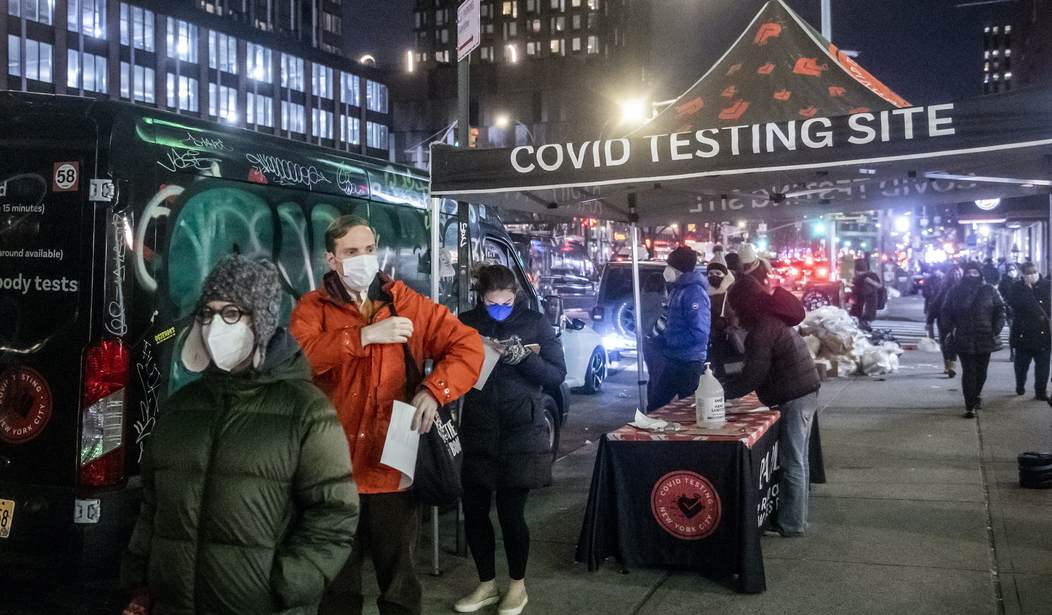Short answer: Probably not.
Longer answer: Probably not, and even if it has, it might not be dangerous enough to do real damage given how much immunity the population now has.
I wrote about the new Omicron subvariants, BA.4 and BA.5, a few weeks ago. Early indications are that they’re more contagious than the current dominant subvariant in the U.S., BA.2.12.1, which is more contagious than the original Omicron, which was itself insanely contagious. Worse, because natural immunity from Omicron appears to last only a few months, a prior infection is no real defense to BA.4 and BA.5. In fact, the two are so immune-evasive that they may be able to puncture immunity even in someone who’s had a recent infection.
The bottom line is that people are going to get COVID over and over and over again in the age of Omicron. There’s no near-term prospect of a vaccine either that might prevent it either: Although the mRNA vaccines do a fine job of conferring immunity to severe disease, a vaccine that will confer immunity against infection a la the smallpox vaccine seems a ways off.
So we’re all destined to catch some Omicron subvariant or another eventually. In which case it’s important to know if those subvariants are becoming more virulent.
You may remember that after Omicron erupted in Africa last winter, scientists scrambled to figure out why those infected with it seemed to experience milder symptoms than they did with previous coronavirus strains. The answer according to some researchers had to do with where in the body the virus took root. Previous strains replicated in the lungs, causing the lethal pneumonia that’s killed millions. Omicron didn’t replicate in the lungs efficiently, however. It replicated in the upper respiratory tract. Because it wasn’t afflicting major organs, more people could shake it off without serious damage.
Researchers in Japan say they have evidence that BA.4 and BA.5 are better at spreading in the lungs than their grandparent was.
According to preliminary data from Kei Sato at the University of Tokyo and colleagues, BA.4, BA.5 and BA.2.12.1 may have evolved to refavour infection of lung cells, rather than upper respiratory tract tissue – making them more similar to earlier variants, such as Alpha or Delta…
Professor Sato’s experiments indicate that BA.4, BA.5 and BA.2.12.1 replicate more efficiently in human lung cells than BA.2, while further experiments in hamsters suggest that BA.4 and BA.5 may cause more severe disease.
“It looks as though these things are switching back to the more dangerous form of infection, so going lower down in the lung,” Dr Stephen Griffin, a virologist at the University of Leeds, said.
Game over, man. Game over.
Or is it? Let’s look at some numbers. According to this site, BA.4 and BA.5 represent a significant majority of cases over the past 60 days in South Africa, the country that’s been hit hardest by the new subvariants. Over the past 60 days, BA.4 accounts for 63 percent of confirmed cases while BA.5 accounts for 20 percent more. Sixty days is also plenty of time for a surge of deaths to appear in the data, as the typical period from infection to death due to COVID is around a month. Do we see a death spike recently in South Africa due to the ominous prevalence of BA.4 and BA.5?

South African researcher Tulio de Oliveira, who sounded the global alarm on Omicron last year, reports that the BA.4 and BA.5 wave has been the *least* deadly wave experienced by the country so far.
It’s harder to draw firm conclusions about the U.S. and UK since BA.4 and BA.5 either aren’t dominant yet or haven’t been dominant long enough to allow us to draw a conclusion about how deadly they might be. Scientists in England believe the two subvariants are spreading quickly there, probably fueled by the recent jubilee celebrations for Queen Elizabeth. Cases are up more than 30 percent in the last seven days — and so are hospitalizations, notably. That’s interesting circumstantial evidence that there may be something to the Japanese data about greater virulence. But how much greater? Here’s what the death curve looks like:

It could be that many of the recently hospitalized will die in the next week or two, sending the curve upward, but there’s no evidence yet that the wave England is experiencing at the moment is a particularly deadly one. Maybe that’s because BA.4 and BA.5 aren’t as virulent as feared, but it may also be that medicine has caught up to the virus and is transforming COVID cases that would have been fatal a year ago into short hospital stays. Combine extensive population immunity with better therapeutics like Paxlovid and a much greater knowledge base among doctors and nurses on how to treat the disease in the ER and even a virulent subvariant may be not so virulent in practice. The two subvariants might be dangerous enough to send you to the hospital more often than Omicron would but possibly not dangerous enough to send you to the morgue. Not at this stage of the pandemic anyway.
One more glimpse at the data. Look back at the excerpt above and you’ll see that Japanese researchers found that BA.2.12.1, not just BA.4 and BA.5, appears to reproduce more efficiently in the lungs than the original Omicron. Well, according to the CDC, there’s been a lot of BA.2.12.1 in the U.S. since early May:

We’ve experienced the same phenomenon England has over those six weeks, with not just cases rising but hospitalizations too. In fact, the number of people hospitalized with COVID is now double what it was in mid-April, more circumstantial evidence that Omicron’s subvariants really are more virulent. But what do we see when we look at the death curve?

No spike. In fact, according to Drudge, we had fewer deaths from COVID yesterday (293) than we had on the same date a year ago (301) even though we had nearly *nine times* as many confirmed cases — and probably many more times that in reality, if we could include all of the people who tested positive yesterday on rapid tests but never bothered confirming their infection with a lab. Even in the age of the Omicron subvariants, the virus is killing vastly fewer people as a percentage of infections than it used to. There’s no good reason yet to think BA.4 and BA.5 are particularly threatening.








Join the conversation as a VIP Member